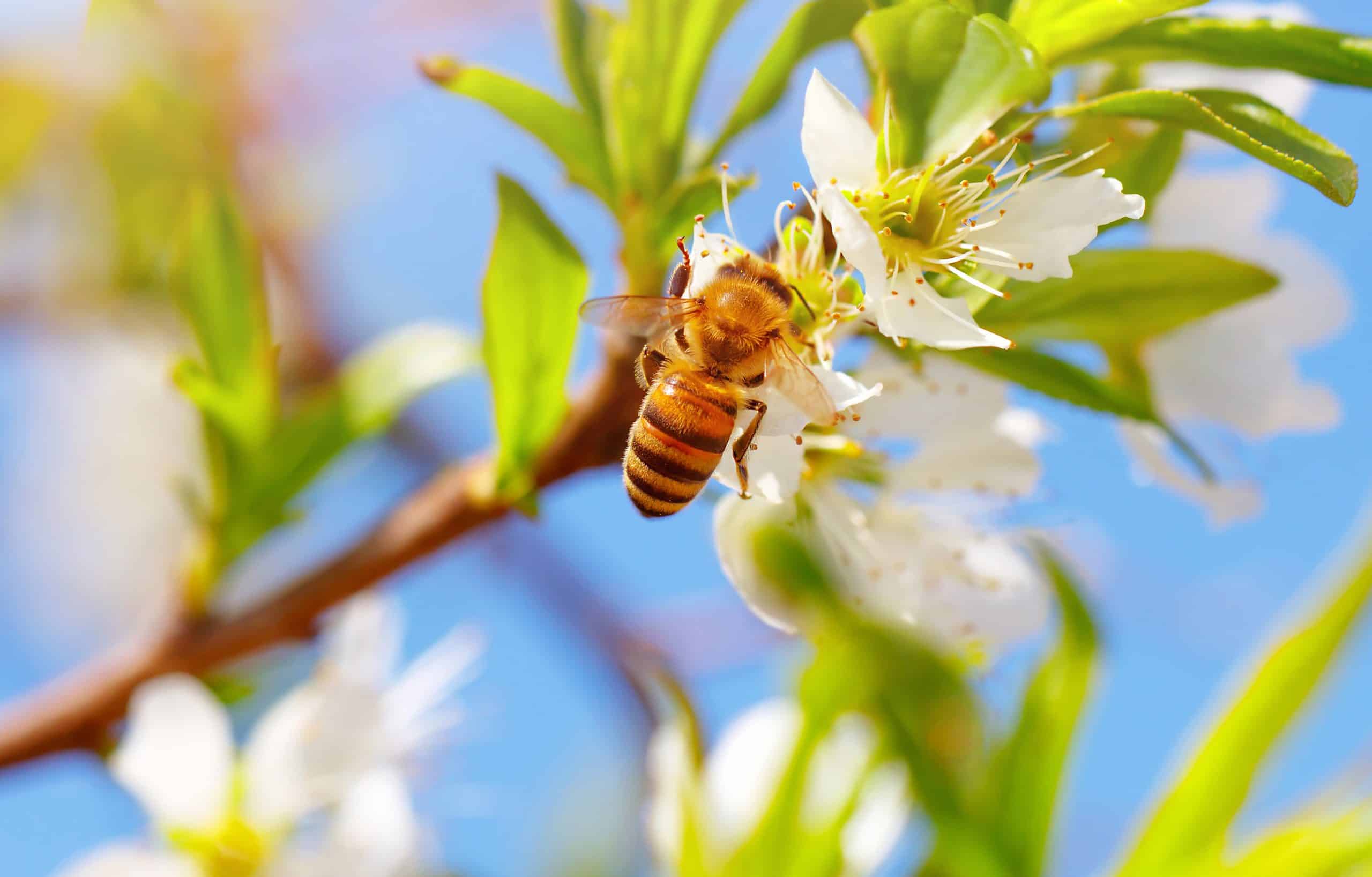The honey bee is the most well-known type of bee and the highest producer of excess honey.
Honey bees are the best pollinators known for their large colonies and the construction of perennial, colonial nests from wax.
A honey bee is the only surviving species of bee from the Apini tribe, which comes under the Apis genus.
Moreover, the honey bee is a member of the insect group Insecta and part of the subfamily Apidae. These insects are known for producing and storing liquefied sugar, otherwise known as honey.
A honey bee is a long-term model for behavioral studies. Honey bees vary in size and are behaviorally quite interesting. Intermediate honey bees typically nest inside hollow trees. In contrast, the dwarf and giant honey bees nest openly on a single wax comb suspended from cliffs, branches, buildings, or other similar overhangs.
If you have garnered an interest in this particular bee species, then this post is going to help you in understanding honey bees.
From their behavior to their importance to the environment, what they eat, how they look like, how they make honey, and more, we will cover everything in this post.
Let’s get started.
Honey Bee Origin
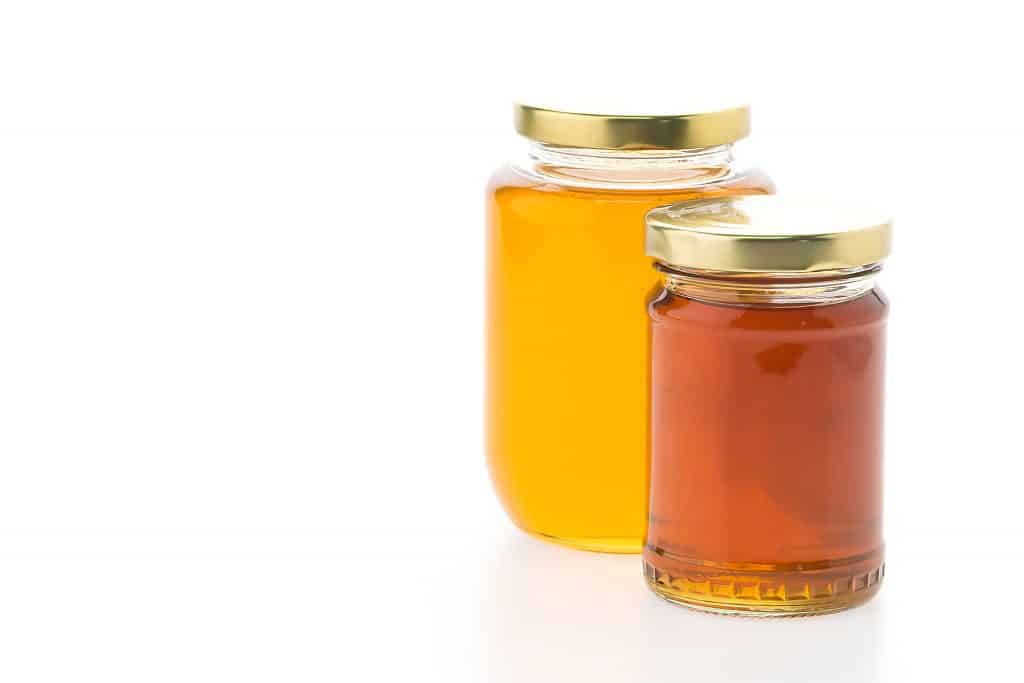
When we talk about the origins of the honey bee, things can get debatable. According to the researchers at the University of California and UC Berkeley, it is claimed that honey bees originated from north-east Africa and the Middle East.
However, there is still fog around the origin of honey bees. Most people think bees that are geographically close are also hereditarily related. But this is not the case. Scientists have found several divergent lineages of bees across the globe, which tells a different story.
Further studies have found a surprisingly high level of genetic diversity in honey bees, indicating that a honey bee most probably originated from Asia and not from north-east Africa, as previously thought.
Research shows that the ancient lineage of honey bees arrived from Asia around 300,000 years ago and spread across the rest of the world.
In the United States, honey bees were brought to the East Coast in 1622, 231 years before they reached the West Coast.
Significant losses of honey bee colonies in the last few decades are a cause of concern. Honey bees face dangers from hostile competitors, disease, geographical barriers, harsh climates, human involvement with the environment, and management practices.
Honey bee provides wax, honey, and propolis for human consumption, and they pollinate seeds and saplings to create a healthy and more robust variety of plants that are resistant to diseases.
Honey Bee Characteristics

Honey bees, depending on the region you find them, differ in color.
Most commonly, you will see a honey bee with black stripes interchanging with bands of brown to amber hairs.
In some cases, a honey bee can look almost black. However, a honey bee will always have a darker and lighter color variation that creates a banding pattern on its body.
A honey bee is covered in a layer of fine hair, which act as sensors for collecting pollen.
In general, an adult worker honey bee grows to between one-half and 5/8 of an inch in length.
A queen honey bee, on the other hand, are larger and can grow three-fourth of an inch in length.
It is the worker honey bees that we encounter most often in our garden or the street as they are foragers looking for the nearest pollen source and nectar.
Honey bees have a barbed stinger with venom in it to help them defend against threats. The stinger comes off its hind-end (thorax), and they can only sting the victim once as the stinger comes off the thorax after use.
This means a honey bee dies after a sting.
What Does a Honey Bee Do?
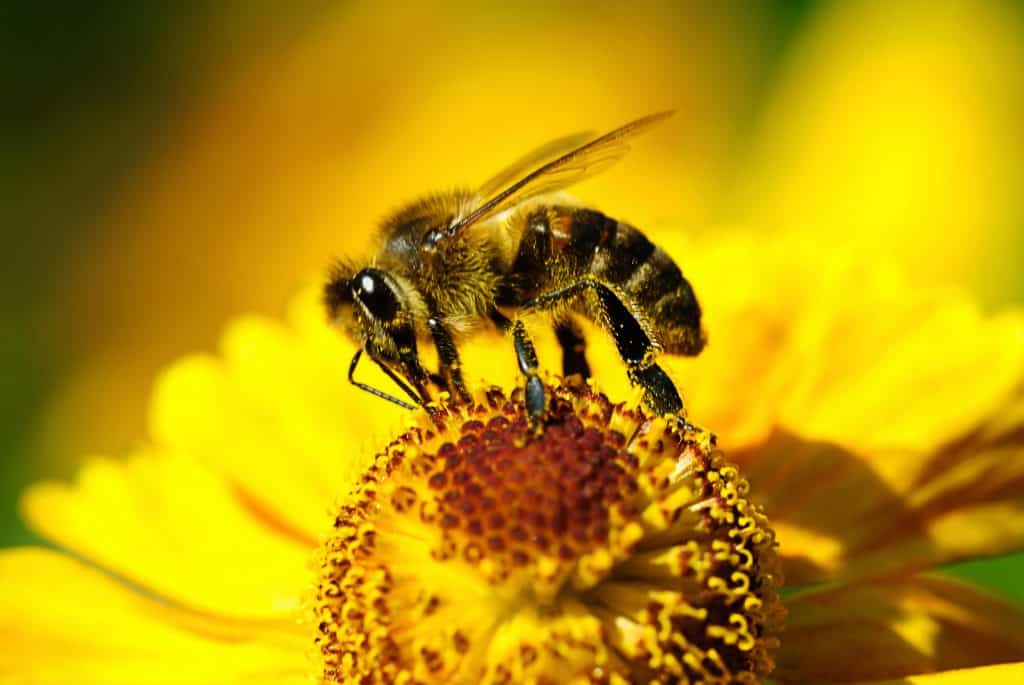
The life of a honey bee revolves around collecting pollen and nectar for the entire colony.
A single nest may contain anywhere around 10,000 to 50,000 honey bees.
They spend their whole life collecting honey and pollen, keeping the queen bee safe and growing the nest.
How Do Honey Bees Make Honey?

As discussed, honey bees collect nectar and pollen as food to feed the entire colony. Inside the beehive, each bee is assigned with a unique role, which ensures that the whole process runs smoothly.
Honey bees thrive on two kinds of food. One is pollen – the anthers of flowers that contain numerous small grains. The other is honey, made from the nectar – sugary juice of the flowers.
A honey bee starts the process of honey-making by visiting flowers and gathering their nectar.
Nectar is a flowering plant’s mechanism of attracting insects like honey bees, butterflies, and wasps to stop at the flower.
When the honey bee stops at the flower collecting nectar, it transfers pollen grains of other flowers to this flower, resulting in the pollination of the flower.
Pollination helps the plant grow strong against diseases and produce more colorful flowers and fruits, which in return, benefits humans and the environment.
When we talk about nectar, it is similar to sugar water – water mixed with sucrose. However, nectars contain other essential components, as well.
A honey bee can carry a payload of pollen and nectar close to its weight.
When the honey bee’s nectar sacs are full, it returns to its nest and delivers the collected nectar to one of the indoor bees.
To convert nectar into honey:
- A honey bee secretes enzymes that turn sucrose into fructose and glucose.
- The solution is sealed using wax after most of the moisture evaporates. This only leaves 18% of the water in honey.
The nectar is passed mouth-to-mouth from bee to bee until the moisture in nectar is reduced to about 20%.
In some cases, nectar is stored in cells in the honeycomb before the mouth-to-mouth process. This is because some evaporation is caused inside the hive at 90°F.
During the mouth-to-mouth process, honey bees secrete enzymes that convert most of the sucrose into two six-carbon sugars, fructose, and glucose. A second enzyme attacks glucose, known as oxidase, which converts glucose into gluconic acid and hydrogen peroxide.
Hydrogen peroxide gives short-range protection to honey against fungi, mold, organisms, and bacteria when it is ripening or is diluted for larval food.
The gluconic acid makes nectar an acid medium with a low pH that is inhospitable to these same organisms. And as the moisture content is reduced, it converts nectar into honey.
The low moisture content gives nectar a high osmotic pressure, which protects it against microbes.
This is what makes honey a stable food. Honey naturally resists fungi, molds, and other bacteria, allowing it to last for years without any special treatment or refrigeration.
Finally, the bees place the honey in storage cells, which is then capped with beeswax. It is stored and preserved for the arrival of the new baby bees.
Before returning to the flowers for more pollen, the honey bee cleans, combs, and cares for itself. Cleaning allows it to get rid of any unwanted residue left on its body from the process of honey making. This allows the honey bee to work more efficiently.
Throughout its lifecycle, the honey bee will work tirelessly collecting nectar and pollen, bringing them back to the hive, cleaning and caring for itself, and then again, she will set out for more food.
When three weeks old, the forager bees start their journey in search of blossom patches. As they only live to be 6-7 weeks old, the forager honey bees have much less time to do a lot of work.
They partner up with other bees and work together to collect nectar and pollen for making honey. It takes about 300 honey bees to collect 450 grams of honey in three weeks — no wonder why they are precious.
On average, a beehive may contain 40,000 honey bees.
What Do Honey Bees Eat?
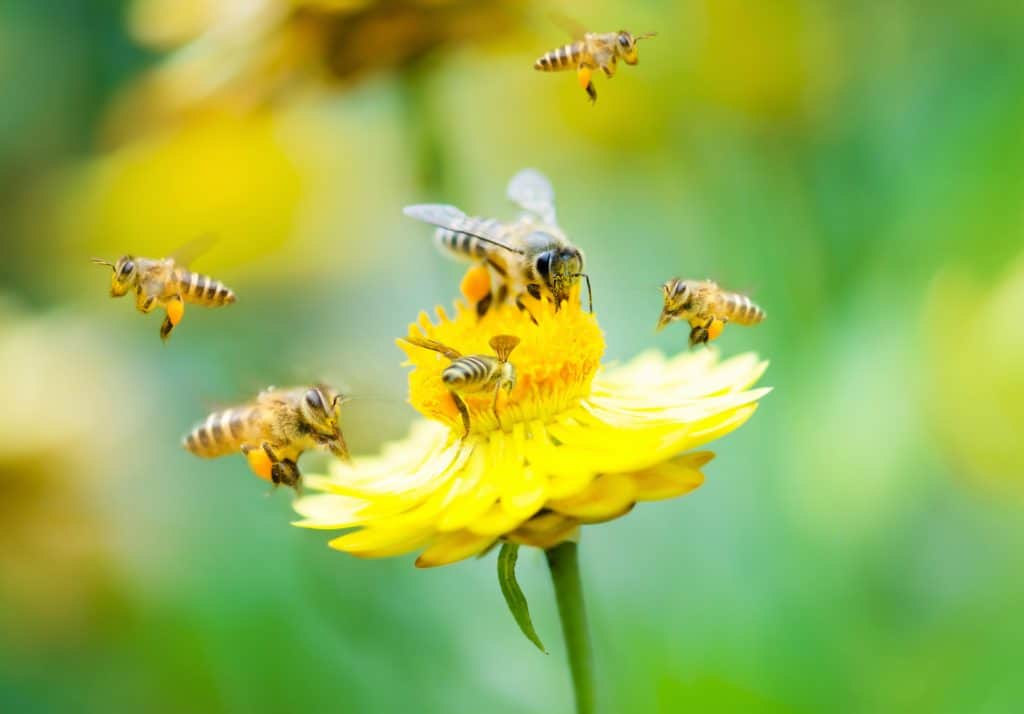
Like any other living thing, honey bees need minerals, vitamins, and carbohydrates for survival. A healthy bee colony works together to provide for all the members of the hive, which can total to a maximum of 50,000 bees.
The exact diet of the honey bee depends on the age of the bee, availability of food, and the species.
As discussed earlier, honey bees eat nectar and pollen collected from the flowers and blooming plants. While they store the majority part of the nectar for making honey, they do consume a little to keep themselves going.
‘Bee Bread’ is a popular food that bees like. It is food that honey bees make by mixing pollen, nectar, and bee saliva. It is fermented over weeks to make the digestion of pollen protein easier.
However, it is fed to the larvae as they need protein-rich food to ensure that their bee community flourishes.
Honey bees eat honey as well. But honey is a preferred food during winters. However, honey is the regular food source fed to baby bees. This is because nectar, due to its high moisture content, isn’t suitable for long-term storage, as it would spoil.
Honey bees also love the sweet fruit juice when available. They will hover over fruits with peeled skin to taste the fresh fruit juice. However, they won’t deliberately attack fruit and crack open its skin to suck on the juice.
The proboscis of a honey bee isn’t strong enough to pierce a fruit skin.
They will only consider having the fruit if it has an open peel.
Honey bees always prefer nectar. Some plants and flowers have ‘extra-floral’ nectaries.
That is, plants secrete nectar from other parts and not just the flowers.
Honey bees know the attributes of the plant they are scavenging. So, they know which sections of the plant to look for.
They also eat honeydew or sometimes convert it into honey. Honeydew is the sweet secretion of insects like aphids, which is considered to be a honey-like substance.
Are Honey Bees Dangerous?
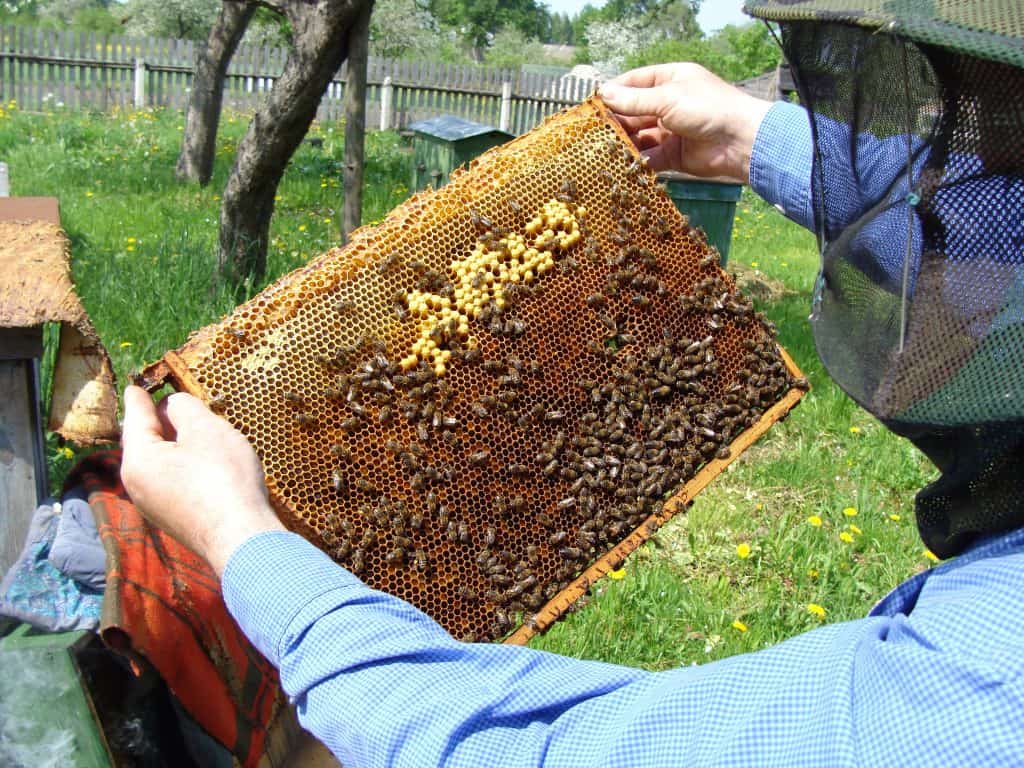
Honey bees are social insects that live in colonies. While they are considered the most beneficial insects to humans and the environment because of the dietary products they offer and their ability to pollinate crops, they can be dangerous, especially if you are allergic to them.
A honey bee can sting you using its stinger. The stings of honey bee are quite painful, and those who are allergic to the venom, it can be life-threatening as well.
However, they don’t barge in and start stinging. They only use their stingers to defend themselves from the enemies, to protect their colony, or protect the queen bee.
A honey bee releases an alarm pheromone when it stings. This pheromone alerts the workers in the colony, making them form an army and recruit to the area.
So, if you see a honey bee, minding its own business, do not disturb it, or else, you will have to face an entire army of 20,000 bees.
How Long Does a Honey Bee Live?
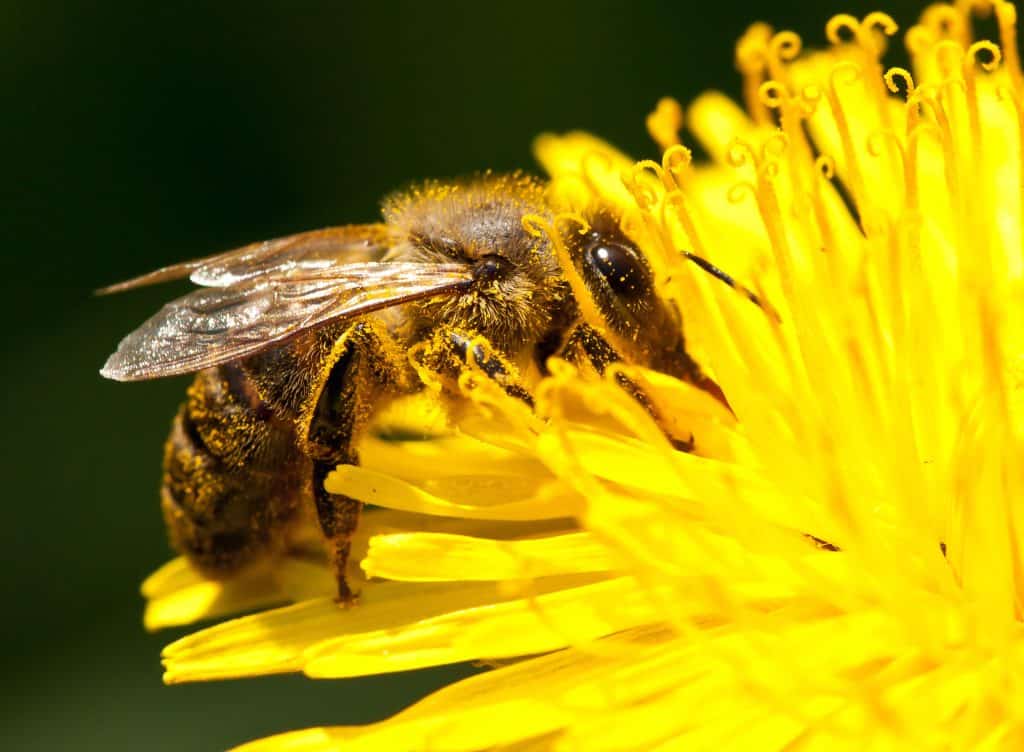
The lifespan of a honey bee contains three phases: the larval stage – the pupa stage – the adult stage.
- The drone bees serve no purpose in the colony other than mating with the queen bee. They die minutes or hours after mating. And if they fail to mate, the work bees either kills them or kicks them out of the colony as they do nothing but waste resources. On average, a drone honey bee lives for eight weeks.
- The worker bees are the most crucial part of the colony. A worker honey bee spends its life finding food for the colony. They only live for 5-6 weeks.
- The queen bee has the longest lifespan of 2-5 years. A queen bee can lay as much as 2000 eggs in a single day.
Conclusion
Honey bees can produce significant amounts of honey if their colony is healthy and growing.
As pollinators, they are critical to the environment, and it is essential to understand honey bees’ contributions to all the living things thriving on this planet.
